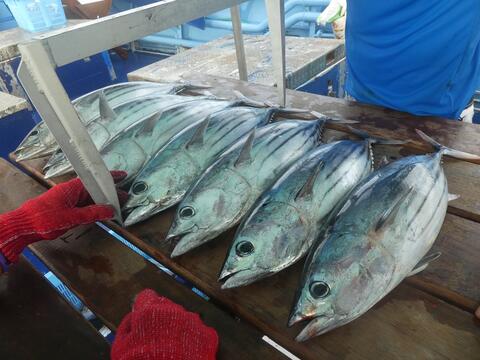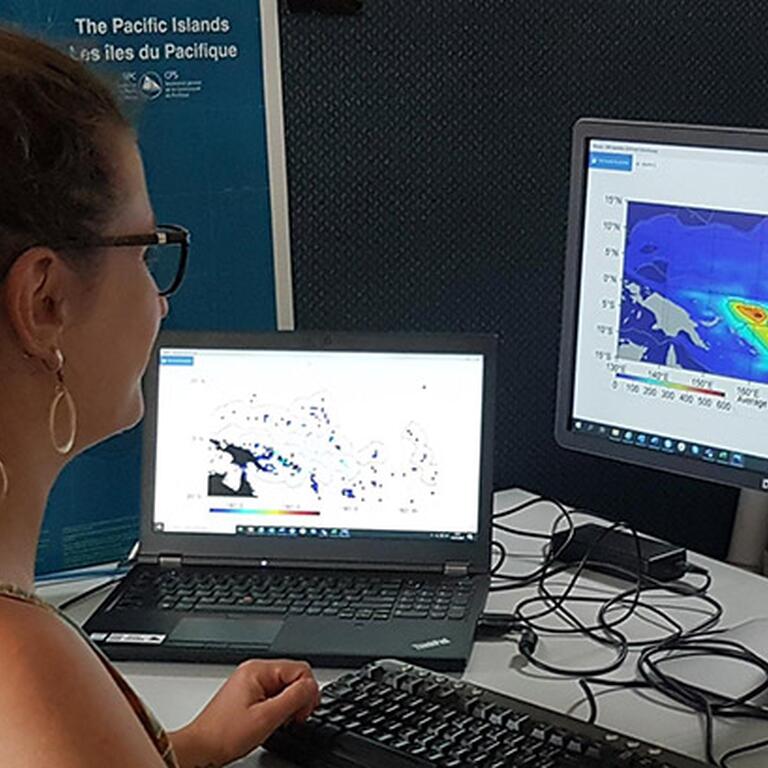Conserving the fish stocks for the future through the development and application of advanced stock assessment models
The western and central Pacific Ocean supports the world’s largest tuna fishery. Each year, several million tonnes of tuna are harvested from the region across four target species: skipjack (Katsuwonus pelamis), yellowfin (Thunnus albacares), bigeye (Thunnus obesus), and albacore tuna (Thunnus alalunga). Most of the tuna catch is taken in the exclusive economic zones (EEZ) of SPC’s Pacific Island member countries and territories (PICTs). Moreover, the revenue derived from the tuna fisheries underpins the economies of many small island developing states (SIDS), and the tuna harvest is regionally and globally important as a source of marine protein – from canned products to high end sashimi. Much of the tuna is also processed in PICTs providing an important source of employment.
Along with tuna, other species such as swordfish, marlin, and pelagic sharks, are caught in lower volume than tuna, either as bycatch, or in some cases, targeted fisheries. These species also require regular assessments to ensure the impact of fishing are being appropriately managed.
Sustainable management of the tuna and other oceanic fisheries resources in the Western and Central Pacific is vital to ensure this revenue stream and food source continues to support the development and livelihoods of Pacific Island people, while also conserving stocks for the future. Our work in stock assessment aims to underpin scientific advice to inform the sustainable management of these critical natural resources.

Challenges
Stock assessment of tuna and other oceanic species is challenging work due to the large area of ocean over which they roam, spanning many EEZs, and the many fishing fleets from different countries that catch them. Due to the large scale of the tuna resource, conducting scientific surveys to estimate stock status is problematic, so our stock assessment work depends mostly on data being collected by the fishing fleets themselves and the observers onboard fishing vessels and in ports. Other research such as tagging and biological sampling and analyses conducted by SPC FAME’s Fisheries Ecosystems Monitoring and Analysis team provides important information for the stock assessments. Consolidating all of this information from many different sources is the first challenge faced, and this is largely dealt with by SPC FAME’s Data Management team.
Modelling
The key work of our stock assessment team is to then apply statistical models to integrate all the relevant data to provide estimates of important quantities for management advice, such as the size (or biomass) of the stocks and the impacts of fishing on the stocks (or fishing mortality). Our stock assessment team also conduct analyses of the projected conditions of the stocks under different levels of catch or effort, referred to as stock projections. This is important for risk assessments comparing how alternative management approaches meet objectives for fishery sustainability and development. The stock assessments also recognise our incomplete knowledge of the biology and uncertainty of the data by running many models that consider alternative, but plausible scenarios, so that management advice considers the range of possible stock conditions rather than just a point estimate.
Our stock assessment work is highly technical, using state of the art modelling approaches that aim to extract as much information on the stock status as possible with the available data. A typical tuna assessment is a big piece of work, often involving several scientists and taking around eight months to complete. Assessments of the four target tuna occur every three years, with billfish (swordfish and striped marlin) and key pelagic sharks (oceanic whitetip, blue shark, silky shark and mako) every 4-5 years. The assessments are commissioned and funded by the Western and Central Pacific Fisheries Commission (WCPFC). The results are reported to the WCPFC’s Scientific Committee each year for review and development of the management advice. Ultimately our stock assessment work supports the development of the conservation and management measures for the region’s tuna, billfish, and pelagic shark stocks.
National level support
Stock assessment is complicated, so to help our members become confident in understanding and interpreting stock assessments and conducting fisheries analyses themselves, our scientists provide national level support in fisheries data analyses and run annual stock assessment training workshops (SAW).



